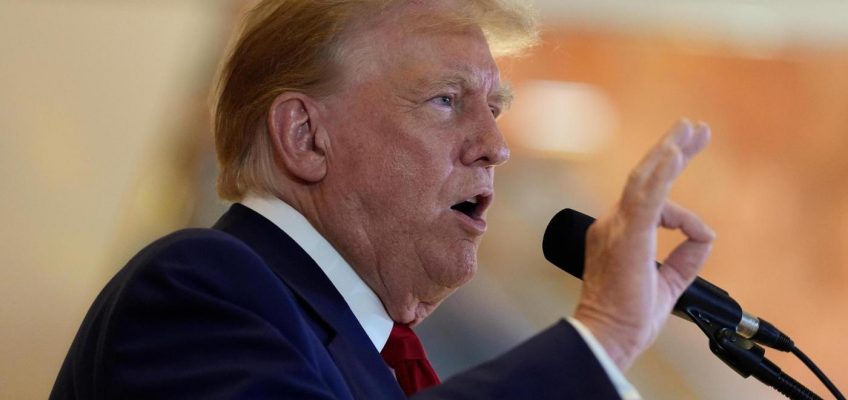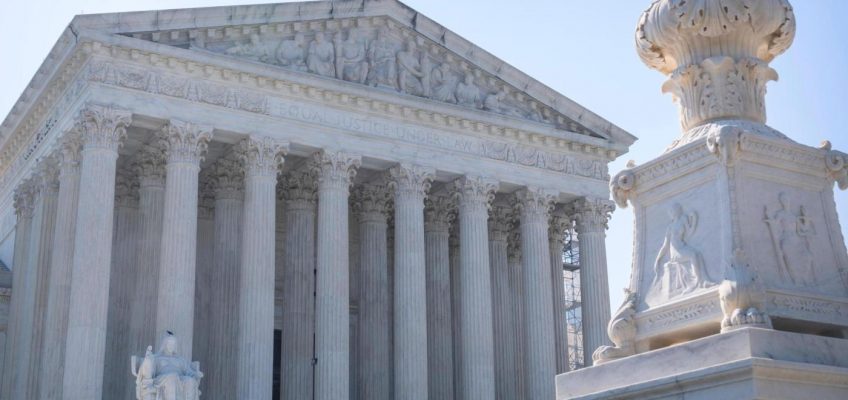By MATTHEW PERRONE (AP Health Writer)
WASHINGTON (AP) — Access to the abortion pill mifepristone will not change after the U.S. Supreme Court unanimously rejected an effort Thursday by anti-abortion groups to roll back its availability, a win for abortion rights supporters and millions of women in states where abortion is legal.
Despite the ruling, women’s access to mifepristone still largely depends on a patchwork of state laws, with only about half of states allowing full access under terms approved by the federal government.
“It doesn’t change anything anywhere,” said David S. Cohen, a law professor at Drexel University. “Tomorrow’s the same as today, which is the same as yesterday, which is the same as before this case was filed.”
Here’s a look at what Thursday’s decision does and does not mean for abortion access.
What did the Supreme Court decide?
Essentially, the justices said the anti-abortion doctors who brought the case did not have the legal standing to sue the Food and Drug Administration over the drug’s safety or changes making it more widely available. The FDA approved the drug more than 20 years ago and has reiterated its safety and effectiveness.
The anti-abortion doctors, under the name the Alliance for Hippocratic Medicine, argued they might have to treat emergency room patients who experience serious injuries after taking mifepristone.
While the decision keeps mifepristone available, legal experts say that other groups or individuals who believe they can show a stronger legal connection to the drug might try to sue along similar lines.
“It’s a win that the status quo is preserved but it doesn’t signal that these are now dead arguments that others aren’t going to try and pursue,” said Rachel Rebouche, a Temple University law professor.
What is mifepristone?
Mifepristone is a prescribed to end pregnancies by dilating the cervix and blocking the hormone progesterone, which is needed to sustain a pregnancy. It is usually taken with a second drug, misprostol, that causes the uterus to cramp and contract. The two-drug regimen is used to end a pregnancy through 10 weeks.
What does the ruling mean for the status of mifepristone?
Mifepristone remains fully approved and available under the current FDA framework, which allows telehealth prescribing and mail delivery to patients. The FDA has also expanded availability to large pharmacy chains and allowed prescribing by nurses and other health professionals.
Those policies have increased the prescribing of mifepristone, which accounted for nearly two-thirds of all U.S. abortions last year.
Access to the pills is restricted across large swaths of the country because of state laws that ban abortion (including medication abortion) outright or impose separate restrictions on the drug’s use.
How do state laws impact access to mifepristone?
Access largely depends on the laws in the state where a patient lives and, in the case of states banning or restricting mifepristone, what steps they are willing to take to circumvent them.
About half of U.S. states allows online prescribing and mail delivery of mifepristone, conforming to FDA’s label for the drug.
Currently, 14 states are enforcing bans on abortion at all stages of pregnancy, including with mifepristone. More than a dozen other states have laws specifically limiting how it can be prescribed, such as requiring an in-person visit with a physician or separate counseling about the potential risks and downsides of the drug.
Those steps are not supported by major medical societies, including the American Medical Association.
How safe and effective is mifepristone?
The FDA and the Biden administration filed multiple legal challenges that reiterated the drug’s safety and effectiveness.
Mifepristone results in a completed abortion 97.4% of the time, according to the FDA label. Like all drugs, the abortion pill is not 100% effective and in 2.6% of cases, a surgical intervention was needed to complete the abortion. Less than 1% of the time, the pregnancy continued.
In rare cases, mifepristone can cause serious complications including excessive bleeding, infections and other emergency problems. Those occur in far less than a fraction of 1% of all patients using the drug, according to the FDA label.
How are medication abortions increasing despite restrictions?
Despite state laws targeting mifepristone, statistics show women in those states continue to receive the drug through the mail because state authorities have little visibility into deliveries by the U.S. Postal Service.
A survey earlier this year found about about 8,000 women a month in states that restrict abortion or place limits on telehealth prescribing were getting the pills by mail by the end of 2023, according to the Society of Family Planning.
What’s next for legal challenges to mifepristone?
Legal experts say other parties could bring new lawsuits.
Idaho, Kansas and Missouri sought to join the case against the FDA and the Biden administration, which Supreme Court rejected — though a conservative Texas judge who initially ruled against the FDA allowed them to intervene in the case in his district. The three states, all led by Republican attorneys general, could try to revive the case at the lower court, according to legal experts.
“They are not physicians who have to show that they actually have some relationship to abortion care,” Rebouche said. “They’re claiming a state interest in the regulation of medicine, so I think that’s the vehicle in which you could see a lawsuit come forward.”
___
Geoff Mulvihill contributed to this story from Cherry Hill, N.J.
___
The Associated Press Health and Science Department receives support from the Howard Hughes Medical Institute’s Science and Educational Media Group. The AP is solely responsible for all content.




